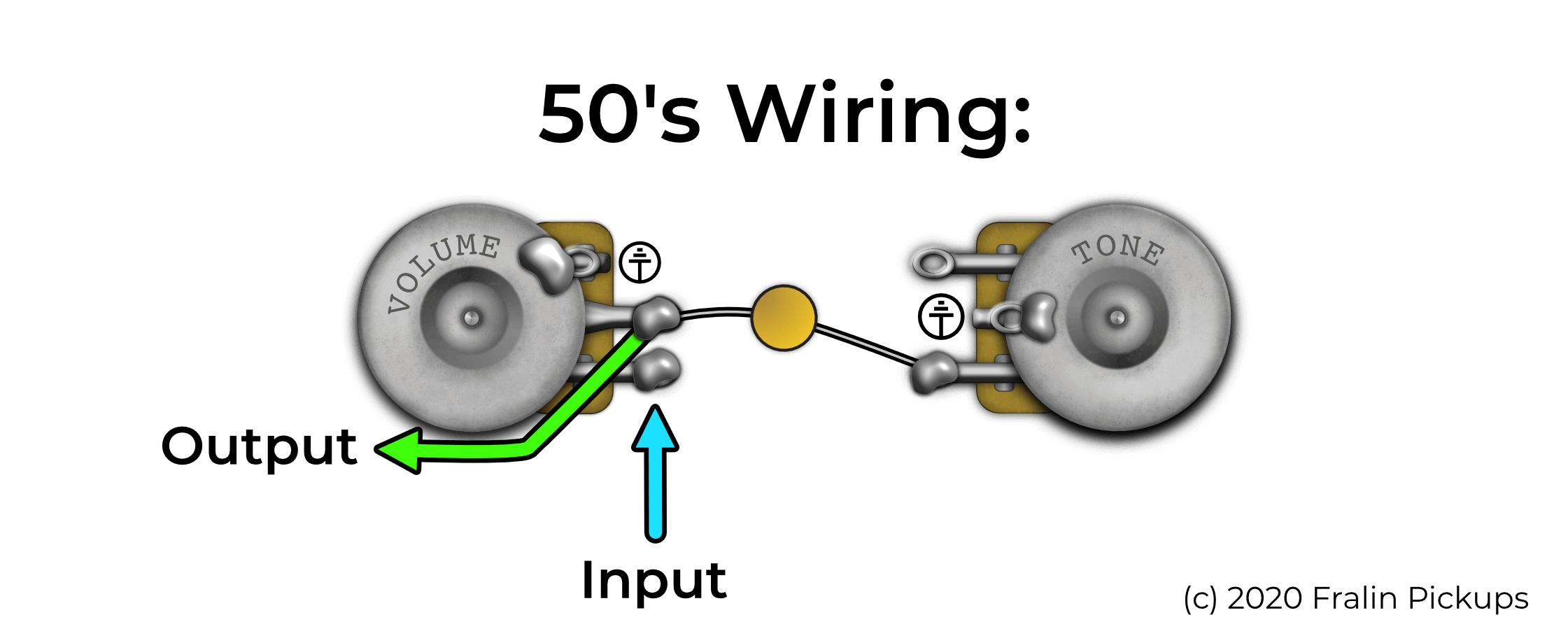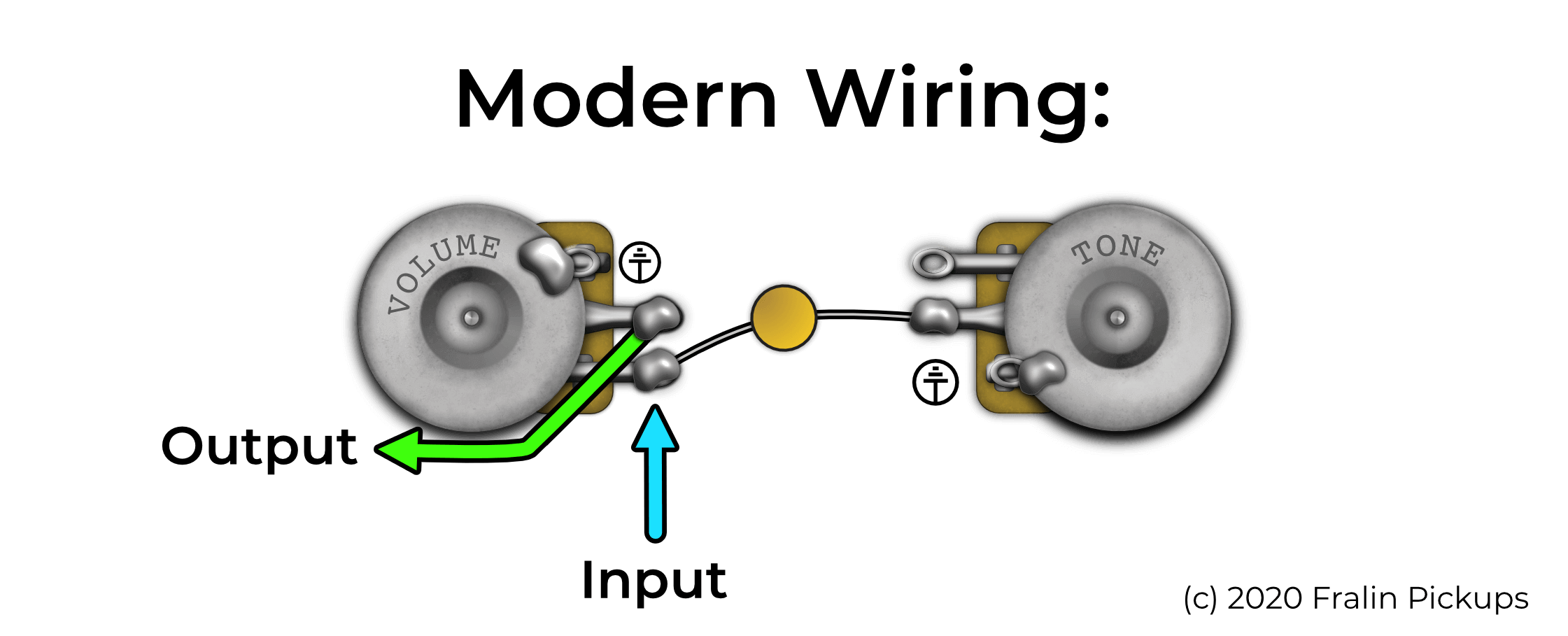How Do Blade Switches Work?
3-Way, 4-Way, 5-Way, Toggle, Blade, Rotary – There’s a lot of switches available for your electric guitar. Some come in a variety of designs and can introduce some new functionality […]


If you have a Les Paul® or Telecaster Deluxe, chances are you have run into this thing called “’50s Wiring“. What is it? Is Modern Wiring better? (spoiler alert: Not necessarily)
Gibson 50’s wiring only refers to how the tone cap is wired into the guitar.
’50s Wiring applies to any guitar with two pickups, each with their own respective Volume Pot and Tone Pot. It involves how the tone cap is wired into the guitar. There are many ways to wire a Tone Cap, but, without getting too technical, the way the tone cap connects between your pots actually changes how your Volume Pots and Tone Pots interact with each other. There are subtle differences between the two that might actually suit your playing style better. Let’s explain the difference between 50’s Wiring and Modern Wiring:

With ’50s Wiring, the tone cap connects to the middle lug of the Volume Pot, and Lug 3 of the Tone Pot.

With Modern Wiring, the Tone Cap connects to the Input Lug of the Volume Pot.
It depends! As listed above, you can tell that there are subtle trade-offs between the two wiring schemes. If you have a dark-sounding guitar, you might like the 50’s Wiring. If you play a softer-style of music, you might like the rolled off high frequencies provided by the Modern Wiring.
With such an easy modification to make, we urge you to experiment. See what works best for you, your guitar, and your playing style!
28 Comments For This Post
Want to chime in to the conversation? Please do so! Please respect others.
just put a switch on the tone cap leave the tone pot alone i’ve notice a big difference in the pickup sound i like both 50’s and modern
just put a switch on the tone cap leave the tone pot alone
Hi,
Really confused about wiring the tone pot. If I go over to SD site and look at wiring, the standard modern way over there is input tied to VOL (lets call that PIN1) and TONE (PIN 3, since it is reverse of VOL as they are facing) and then the Tone Cap from PIN2 to GROUND, output Pin 2 VOL and GND. I have a Dennis Fano made like that and a Rivolta. I have a Fender DuoSonic with input into VOL Pin1, Pin2 (Output) to Tone Pin 3, ToneCap from Tone Pin 2 to GND. Neither of these fit the 50, 60 and STD wiring that I have seen. Please advise, thanks Gordon.